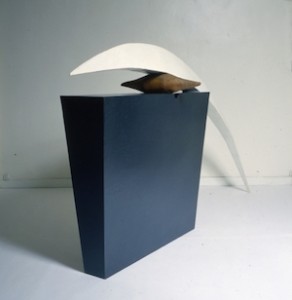 This interdisciplinary conference aims to bring together scholars from the sciences, social sciences and humanities in order to address material practices of mimesis. Aristotle, in one of the first definitions of the concept, argues that mimesis, or the imitation of nature, refers to both form and material. Thus far, scholarship has mostly focused on the role of form in mimetic practices, while the mimetic role of materials, despite the many disciplines in which these are central to making and knowing, remains significantly understudied.
This interdisciplinary conference aims to bring together scholars from the sciences, social sciences and humanities in order to address material practices of mimesis. Aristotle, in one of the first definitions of the concept, argues that mimesis, or the imitation of nature, refers to both form and material. Thus far, scholarship has mostly focused on the role of form in mimetic practices, while the mimetic role of materials, despite the many disciplines in which these are central to making and knowing, remains significantly understudied.
Materials play a fundamental role in mimetic practices, from the earliest known examples to some of the most recent. Ancient ceramic vessels, for instance, some nearly four millennia old, imitate the visual appearance of other materials like metal or straw, while medieval artisans gave wood the costly appearance of marble, or made paper seem like gilded leather. The industrial revolution and chemical innovation created many new opportunities for material mimesis, crowned with the invention of plastics, which can be transformed into almost anything imaginable. Today, computer science allows us to flip pages of digital paper and navigate the visible world in three dimensions, while material science has invented biomaterials that replace the cells of our bodies, smart materials that can assume the appearance of their surroundings, and drugs that imitate the material of neurotransmitters, to name but a few. The role of materials in mimesis is by no means limited to the past: the practice will continue to have an impact in the future which cannot be foreseen.
The conference invites papers that explore the different roles played by materials in mimetic practices. The notion of substitution raises questions about the new techniques invented by artisans for making one material resemble another, as well as about the politics of the Ersatz in diet and medicine. Replication has united historians and anthropologists in attempts to reconstruct past materials and techniques, as well as engaging historians of science with the issue of ‘tacit knowledge’. Forgery, from banknotes to paintings, creates a competition to establish expertise over materials and mimetic processes between forgers and their opponents, who each have to become increasingly expert in order either to produce, or to detect, fraudulent objects. Nachahmung, the question of likeness and verisimilitude, is particularly interesting in material mimetic practices where artisans attempt to materialize the impossible, to give marble the weight of silk and hair, or have paper take on the appearance of a solid block of gold. Similarly interesting in this respect is the discussion over which representations of animal and plant materials most successfully capture ‘Nature’. Preservation is also a form of material mimesis, not only in recreations of life and the body after death in mummies, effigies and relics, but also as a way of stabilising a lasting value in certain material objects, either through technologies of preventing change or through reuse. Lastly, the question of disguise engages with material mimesis in important ways, from animal camouflage to smart materials that can assume the appearance of their surroundings and debates about bio-engineering where artificial tissues and organs are made to become one with our bodies.
Participants from different fields are welcome, including, but not limited to, archaeology, philosophy, art history and technical art history, history of science, technology and medicine, materials science, biology, anthropology and sociology.
Deadline for submissions: 15 September 2015.
Abstracts and proposals of 300 words (max), a short biography of 100 words (max). Please reply to: materialmimesis@gmail.com
CRASSH, University of Cambridge, December 17 – 18, 2015
Sponsored by:
CRASSH (Centre for Research into the Arts, Social Sciences and Humanities)
NWO (The Netherlands Organisation for Scientific Research)
Organized by:
Dr Emma Spary (University of Cambridge) and Dr Marjolijn Bol (University of Amsterdam and the Max Planck Institute for the History of Science, Berlin)

Leave a Reply
You must be logged in to post a comment.